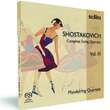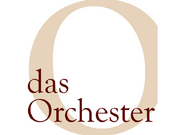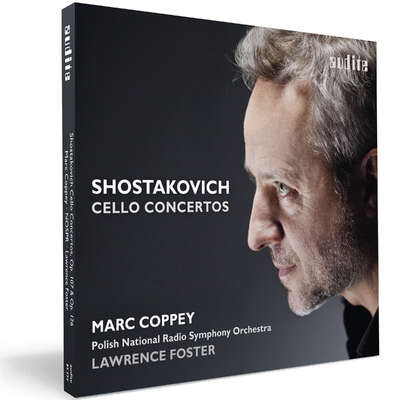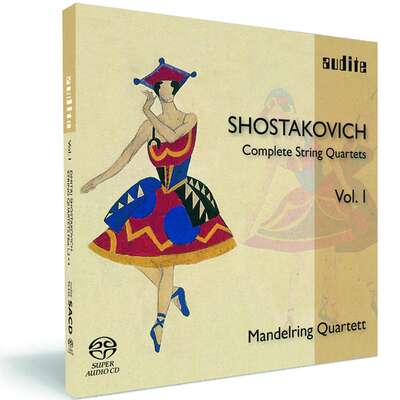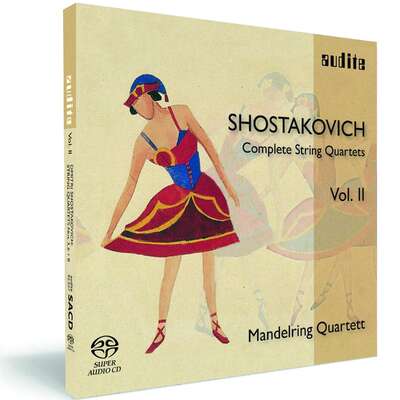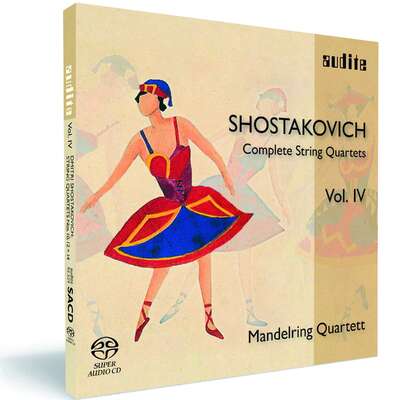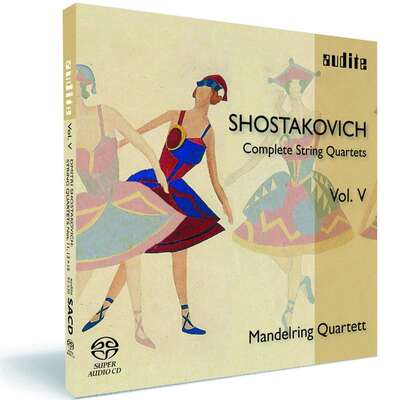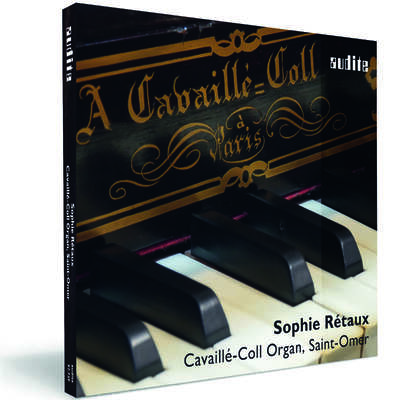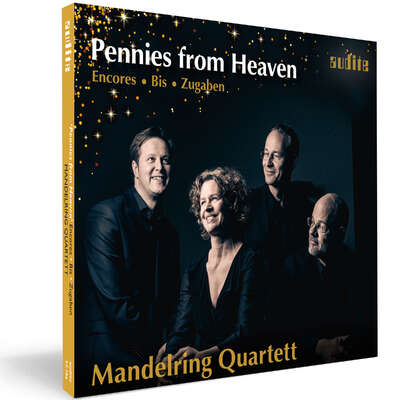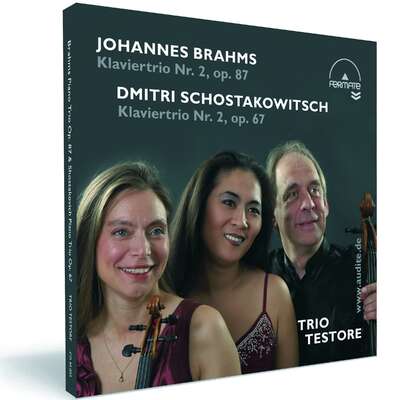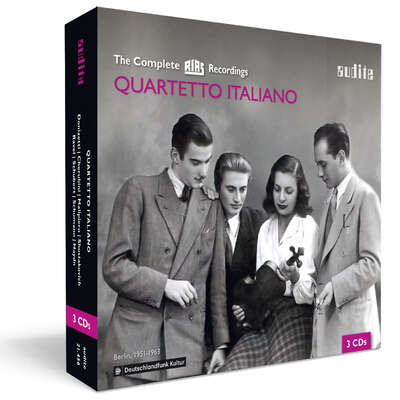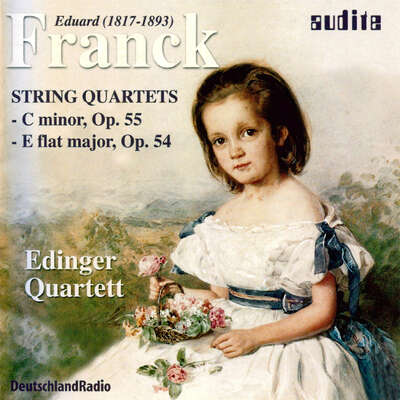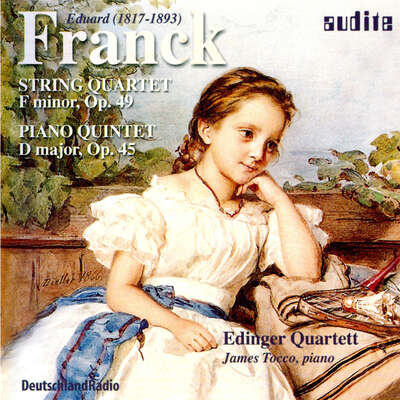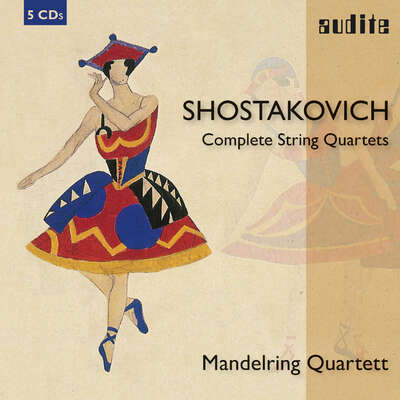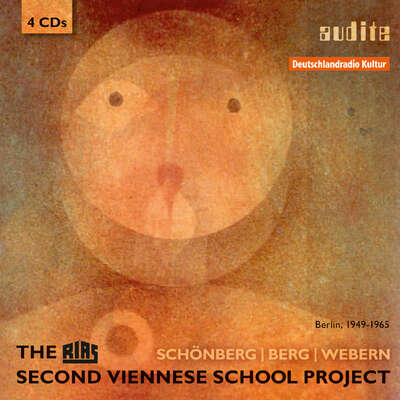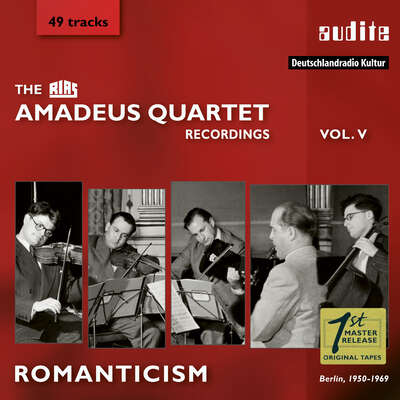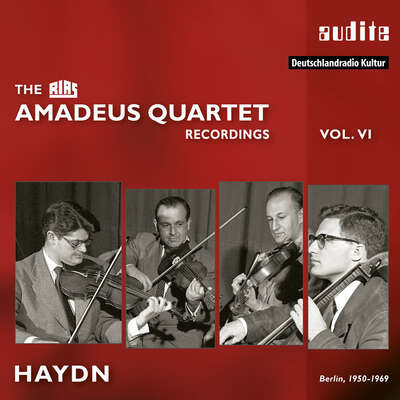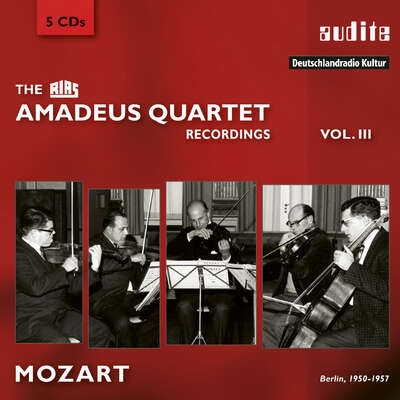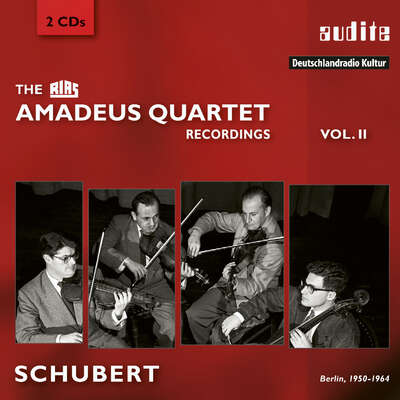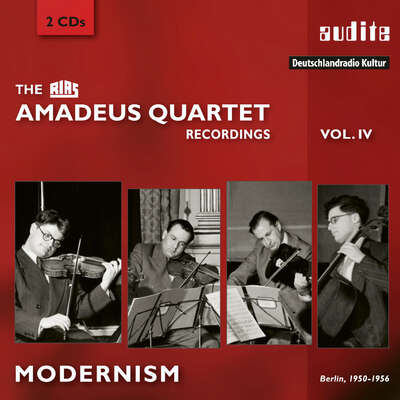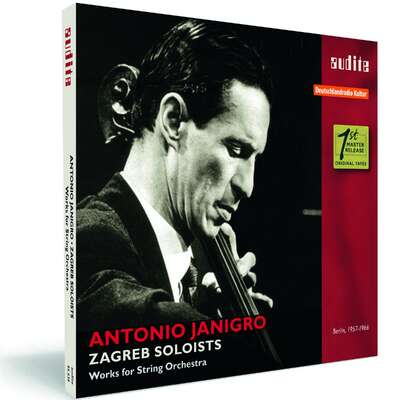
Following the release of the Mandelring Quartett 's highly acclaimed first and second volume of the Complete String Quartets of Dmitri Shostakovich, they have now recorded a third volume containing another three. There is no doubt that Ludwig van Beethoven’s legacy was fundamental in the...more
"Does the world need this set from the Manderlings? Possibly not but, on the basis of the three quartets on this disc (5, 7 and 9), these musicians are indeed to be taken seriously." (The Ottawa Citizen)
Details
| Dmitri Shostakovich: Complete String Quartets Vol. III | |
| article number: | 92.528 |
|---|---|
| EAN barcode: | 4022143925282 |
| price group: | ACX |
| release date: | 12. March 2008 |
| total time: | 67 min. |
Bonus Material
Informationen
Following the release of the Mandelring Quartett's highly acclaimed first and second volume of the Complete String Quartets of Dmitri Shostakovich, they have now recorded a third volume containing another three.
There is no doubt that Ludwig van Beethoven’s legacy was fundamental in the creation of Dmitri Shostakovich’s String Quartets which are outstanding both in their craftsmanship and spirituality. The Russian master approached the classicist composer via different paths, experimenting with a suite-like variety of forms and extending his expressional spectrum to great heights. The String Quartets No. 5 (1952), No. 7 (1960) and No. 9 (1964) are also convincing in their palette of forms and expressions on a chamber music level, as well as their technical demands and cyclical links between movements. The confessional character of the works is determined by three secret acknowledgements: to his beloved pupil Galina Ustvolskaya, his late wife Nina and his third wife to whom Shostakovich dedicated his ninth string quartet.
The Complete Edition of all fifteen String Quartets by Shostakovich: an imposing corpus of works in which the highly decorated Soviet “model composer” maintained his inner non-conformism.
Reviews
Sikorski | Augsut 2010 | August 1, 2010 Gesamteinspielung der Schostakowitsch-Quartette durch das Mandelring Quartett komplett
Die späten Streichquartette von Dmitri Schostakowitsch fallen in eineMehr lesen
concerti - Das Berliner Musikleben | Mai 2010 | Ulrike Klobes | May 1, 2010
Gemeinsam den Emotionen nachgehen
Das Mandelring Quartett und sein Berlin-Zyklus im Kammermusiksaal
Neustadt an der Weinstraße – von Berlin aus nicht gerade einMehr lesen
Universitas | Nr. 2/2010 | Adelbert Reif | February 1, 2010
Über den Grad der Bedeutung von Dmitri Schostakowitsch (1906-1975) fürMehr lesen
Diverdi Magazin | 189 / febrero 2010 | Pablo-L. Rodríguez | February 1, 2010
Shostakovichfest
El cuarteto Mandelring culmina una impresionante integral Shostakovich en Audite
El termino “Hausmusik” alude a la música pensada para su interpretación en casa por la familia y los amigos con el fin de entrerenerseMehr lesen
La carrera del Mandelring Quartett despegó en 1991 cuando ganaron en Munich el concurso internacional de música del ARD, el concurso Evian o se alzaron tres anos más tarde con el Premio “Paolo Borgiani" en Reggio Emilia. En esos años iniciaron también su carrera fonográfica en el sello Largo con la integral de los cuartetos de Berthold Goldschmidt (1903-1996), el último de los cuales les esta dedicado. Su siguiente proyecto lo realizaron enere 1992 y 2003 en el sello CPO y supuso la recuperación del noneto. uno de los 37 quinteros y nueve de los 34 cuartetos dei compositor francés Georges Onslow( 1784-1853). Y es que los cuatro miembros del Mandelring Quartett están profundamente implicados en dar rienda suelta a su curiosidad a la hora de diseñar provectos interesantes tanto para ellos como para los promotores v el publico. Precisamente el interés de I.udger Böckenhoff por ampliar el sello Audite, que había lanzado en 2000, a grandes proyectos fonográficos hizo que el Mandelring Quartett pasase a formar parce de su escuderla. Inicialmenre planificaron una integral de los cuartetos de Schubert que ha quedado detenida desde 2005 tras tres lanzamientos y que se ha combinado con un interesante proyecto iniciado en 2004 y concluido en 2007 de grabar los cuartetos de Brahms junto a otros de amigos y defensores suyos como Félix Otto Dessoff, Friedrich Gernsheim o Heinrich von Herzogenberg. No obstante, el provecto más prestigioso del Mandelring Quartett, y más aclamado por la prensa internacional, es la intergral de los cuartetos de Dimitri Shostakovich que iniciaron en 2006 y que acaban de concluir tras cinco lanzamientos.
El interés de estos cinco SACDs (a los que se añade el referido DVD con el segundo) no sólo reside en la calidad musical, sino también en la técnica. Creo que estamos ante la primera integral de los cuartetos del compositor sanpeterburgués en sonido envolvente y, si a ello le añadimos la marca de calidad sonora de Böckenhoff (que ya hemos comentado en estas páginas en relación con el cofre dedicados a las grabaciones de Furtwängler para la RÍAS: véase Boletín n° 181, págs. 38-39), el resultado no puede ser más satisfactorio a la hora de disfrutar con impresionante equilibrio, espacialidad y precisión de todos los detalles de cada interpretación. Estos cinco discos contienen una visión completamente nueva, donde cada uno de los cuatro músicos busca su personalidad sin detrimento del conjunto, sumamente intensa (el manejo de las tensiones es impresionante en algunas obras) y con un extraordinario predominio de la claridad formal (se consiguen versiones muy equilibradas), tímbrica (toda una lección de manejo del fraseo y de diferentes tipos de vibrare o golpes de arco) y dinámica (hay constrastes ciertamente de impacto) de estas quince obras excepcionales de la literatura para dieciséis cuerdas.
Cada lanzamiento incluye alguna versión excepcional e incluso el orden de su publicación resulta sumamente interesante para la escucha de todo el ciclo. El primer volumen se inicia con una versión fascinante de ese personalísimo divertimento shostakovichiano que es el Primer cuarteto o el Segundo impresiona por su mezcla de virtuosismo y entonación. El volumen dos resulta algo menos convincente pues se adopta un acercamiento cómodo y menos implicado; el Tercer cuarteto esta admirablemente locado (impresionante desarrollo fugado del primer movimiento) pero le falta humor negro. Su versión desgarradora de principio a fin del Octavo, que ha sido criticada por algunos por su enfoque de los dos últimos movimientos, puede resultar comprensible; recordemos que escuchamos a un cuarteto alemán en una efigie fúnebre personal compuesta tras una visita a Dresde en 1960. El tercer volumen, que incluye los retratos de las tres mujeres más importantes en la vida del compositor (su primera esposa Nina en el Séptimo, su segunda esposa Irina en el Noveno o su amante la compositora Galina Ustvolskaya en el Quinto) supera las trallas del anterior, al ahondar con mayor acierto en la uniformidad de los tempi (los lentos no demasiado lentos y los rápidos con más intensidad que velocidad), algo que, por cierto, también hacía el Cuarteto Beethoven que estrenó estas tres obras; de este lanzamiento Norberto Tauste publicó una breve reseña en el Boletín n° 174, pag. 53. El cuarto volumen sigue el camino ascendente marcado por el anterior con una versión del Décimo cuarteto admirablemente equilibrada de carácter y ahondando en los contrastes (excelente aquí la passacaglia) o un Duodécimo de corte intimista y profundizando en los coqueteos dodecafónicos del compositor ruso. Finalmente, el quinto volumen plasma con sorprendente precisión y riqueza de matices todas las caras de la muerte; resulta un digno colofón para este verdadero Shostakovichfest y culmina con una versión del Quincuagésimo cuarteto completamente personal y fascinante en esa sucesión de reflexiones funerarias contenidas en seis movimientos lentos.
Die Rheinpfalz | Mittwoch, 27. Januar 2010 Nr. 22 | Frank Pommer | January 27, 2010
Verstörte Seele
Angespielt: Das Neustadter Mandelring-Quartett beendet beeindruckend seinen fünfteiligen Schostakowitsch-Zyklus
Das Neustadter Mandelring-Quartett genießt dank seiner Konzerte und weitMehr lesen
www.sikorski.de | Januar 2010 | - | January 15, 2010 Gesamteinspielung der Schostakowitsch-Quartette durch das Mandelring Quartett komplett
Die späten Streichquartette von Dmitri Schostakowitsch fallen in eineMehr lesen
Die Zeit | 26. November 2009, Die Zeit Nr. 49 | Volker Hagedorn | November 26, 2009
Das heimliche Tagebuch
Nirgendwo wird Dmitri Schostakowitsch so persönlich wie in seinen 15 Streichquartetten. Das Mandelring Quartett legt eine eindrucksvolle Gesamtaufnahme vor
Mit 66 Jahren fing das Leben vielleicht für Udo Jürgens an, aber nichtMehr lesen
www.parutions.com | Mardi 7 juillet 2009 | July 7, 2009 Dimitri Chostakovitch – Intégrale des Quatuors à Cordes vol: 3
Voici le troisième volume d'une intégrale exemplaire des Quatuors àMehr lesen
Neue Zeitschrift für Musik | 4/2009 | Thomas Schulz | July 1, 2009
Die Streichquartette Dmitri Schostakowitschs enthalten vielleicht dasMehr lesen
Scherzo | mayo 2009 | Juan Carlos Moreno | May 1, 2009
A pesar de su juventud, el Cuarteto Mandelring es ya un conjunto plenamenteMehr lesen
CD Compact | Marzo 2009 | Benjamín Fontvella | March 1, 2009
Con este volumen se completan los nueve primeros cuartetos de Shostakovich.Mehr lesen
The Ottawa Citizen | December 27, 2008 | Richard Todd | December 27, 2008 Fasten your seatbelt for this musical ride
Shostakovich: String Quartets, vol. 3 -- Manderling SQ (Audite): Does theMehr lesen
Das Orchester | 11/2008 | Werner Bodendorff | November 1, 2008
Neun der insgesamt fünfzehn Streichquartette von Dmitri SchostakowitschMehr lesen
Fono Forum | 10/2008 | Marcus Stäbler | October 1, 2008 Expressiv
Die Streichquartette von Schostakowitsch bergen häufig intime Botschaften des Komponisten. So auch die drei hier eingespielten Werke, denen aufMehr lesen
Diverdi Magazin | Octubre 2008 | Norberto Tauste | October 1, 2008
Telepática precisión
Volumen III de los cuartetos de Shostakovich por el Mandelring
El Cuarteto Mandelring, una de las jóvenes formaciones más aclamadas de nuestros días, prosigue su integral para Audite dedicada a DimitriMehr lesen
El Cuarteto n° 5 en si bemol mayor op. 92, coetáneo de la Sinfonía n° 10, proporciona al Mandelring la ocasión de modular sonoridades de densos volúmenes, casi orquestales, sin renunciar nunca a esa elegancia rezumante de sarcasmo propia de Shostakovich que de un compás a otro se convierte en turbulencia armónica y absoluto contraste rítmico. Las formas más despojadas del Cuarteto n° 7 en fa sostenido menor op. 108 aparecen en esta versión dotadadas de lunar lirismo, alcanzándose un alto grado de lacerante intimismo en esos díalogos para dos instrumentos del Lento. Por último, en Cuarteto n° 9 en si bemol mayor op. 118 el grupo atraviesa las viciadas atmósferas de la pieza iluminando con coherencia sus relaciones motívicas y elaborando un detalladísimo tejido tímbrico. Magnificas tomas de sonido en todos los casos.
www.classicalcdreview.com | October 2008 | R.E.B. | October 1, 2008
The Mandelring Quartet continues its series of the Shostakovich stringMehr lesen
Audiophile Audition | August 2008 | Steven Ritter | August 30, 2008
Another stirring issue in an ongoing surround-sound cycle of no littleMehr lesen
klassik.com | August 2008 | Michael Pitz-Grewenig | August 19, 2008 | source: http://magazin.k... Ohne interpretatorische Kniefälle und weihevolles Weihrauchschwenken
Die Zeiten ändern sich und damit auch ihre Ausdrucksweisen. GoethesMehr lesen
Audio Live | August 2008 | Andreas Fritz | August 1, 2008
Es waren Dmitri Schostakowitschs Frauen, die diese drei StreichquartetteMehr lesen
Frankfurter Allgemeine Zeitung | 19. Juli 2008 | Gerhard Rohde | July 19, 2008
Das Quartett als Spiegel der Welt
Dmitri Schostakowitsch hat in seinen fünfzehn Streichquartetten eine Art Tagebuch verfasst aus dunkler Zeit. Jetzt ist die Gesamtausgabe mit dem Mandelring Quartett komplett
Zu den Phänomenen der gegenwärtigen Musik, auch des Musikbetriebs,Mehr lesen
Partituren | #17 – Juli/August 2008 | GR | July 1, 2008
Zwei herausragende Schostakowitsch-CDs hat das Mandelring Quartett im Rahmen ihrer Gesamteinspielung schon vorgelegt. Gestalterische ExpressivitätMehr lesen
www.new-classics.co.uk | June 2008 | John Pitt | June 25, 2008
Dmitri Shostakovich’s fifteen String Quartets are among the 20th century’s most profound chamber works, outstanding both in their craftsmanshipMehr lesen
Die Rheinpfalz | Nr. 143/2008 | Frank Pommer | June 20, 2008
Der besondere Tipp – Schostakowitsch zum Geburtstag
Mandelring Quartett wird 25 Jahre alt
Sie gehören zu den kulturellen Botschaftern der Region: Die GeschwisterMehr lesen
Mannheimer Morgen | rud | June 19, 2008 Tief und zum Staunen
Bereits seit Jahren gehört das Mandelring Quartett zur Spitze derMehr lesen
International Record Review | June 2008 | Raymond S. Tuttle | June 1, 2008
The Mandelring Quartett are named for a street in Neustadt an der Weinstrasse on which three of its four members lived. This is not surprising,Mehr lesen
Ensemble - Magazin für Kammermusik | 3/08 - Juni/Juli | Detlev Bork | June 1, 2008 Packend
Letztens war's der zweite Streich, und der dritte folgt sogleich. Und wasMehr lesen
ionarts.blogspot.com | Thursday, May 29, 2008 | jfl | May 29, 2008 Shostakovich with the Mandelring Quartett
Shostakovich’s String Quartets are, alongside those of Bartók, Villa-Lobos, and possibly Bloch, the towering [20th century] achievements in thatMehr lesen
Just as it has become the norm for every better orchestra to record a Mahler symphony cycle in the last ten years, it’s part of the good tone for aspiring and established string quartets to delve into Shostakovich cycles. After the pioneering Beethoven (Legendary Treasure), Shostakovich (Regis), Fitzwilliam (Decca), and Borodin String Quartets (an early cycle on Chandos Historical and a complete one on Melodiya) had completed their cycles, there was little to challenge the primacy especially of the latter two until the Emerson String Quartet darted into the relative void with their squeaky clean, live cycle from Aspen on DG. Since then complete cycles have been added by the Brodsky (Warner), Sorrel (Chandos), St. Petersburg (Hyperion), Éder (Naxos), Rubio (Brilliant), Manhattan (Ess.a.y), Danel (Fuga Libera), and Rasumovsky (Oehms, not yet available)Quartets.
One of the most exciting prospects for a cycle of Shostakovich quartets these days is the Israeli-Russian Jerusalem Quartet. They have two recordings of DSCH out, so far, and the leisurely pace seems to be beneficial to the project, assuming a whole cycle is planned. Definitively planning a complete cycle is the Mandelring Quartett from Germany who have arrived on volume three of five of their multi-channel SACD project. I have enjoyed them live and on disc – and in particular their innovative Brahms cycle - coupled with neglected contemporaries like Dessoff – has piqued my interest.
The first two instalments of this group, consisting of the siblings Sebastian, Nanette, and Bernhard Schmidt (violins and cello, respectively) as well as violist Roland Glassl, have already picked up several recommendations – promises of excellence that the third, which includes String Quartets nos. 5, 7, and 9, seems to hold.
Serving as my primary comparison for these recordings is the second Borodin cycle – newly re-mastered and released on Melodiya and more than ever my favorite for the emotional grit and grip that they exude. The sound, formerly “good enough”, is now very fine indeed; the background hiss audible, but even on headphones never intrusive – a definite improvement on the old BMG-distributed cycle.
String Quartet no.7, a sorrowful little number dedicated to the memory of his first wife Nina Vassilyevna Shostakovich who had died of cancer in 1954, is – in the inimitably translated liner notes of the Melodiya release – “a more little of all Shostakovich’s quartets. But there’s said a lot – and said newly.”. Indeed. The opening movement (Allegretto) has a light flexibility, deliberate elasticity with the Mandelring Quartett (3:34); the Borodin is notably faster (3:19) with more anguished peaks. The Hagen Quartett, whose latest disc includes this quartet (as well as nos.3 and 8), is more like spun silver threads; a perfection of individual voices.
The slow Lento movement highlights the Hagen’s individual excellence and separation again – whereas the Mandelrings sound a little hazier. But whereas the Hagens are utterly gloomy here, catching a grove only very late in the shortest of movements (2:46 with the Hagen, 2:52 with the Mandelring, and 3:34 with the Borodin), the Mandelring is comparatively bright. The Hagen Quartet seems to celebrate slacking dystopia and shapelessness, the Mandelring finds more purpose. Neither could possibly sustain the movement over three and a half minutes in the way that the Borodin does, without ever dropping the musical thread. Their take is not gloomy but steady – offering a constantly moving pulse throughout, lyrical toward the end, and almost unnoticeably slow.
Even the speedy and wild(er) third movement – Allegro – has a dark, melancholic, even lethargic undertone, a trace that all the busyness on the surface cannot dispel. It’s not unlike the 8th Symphony, in a way, but a merciful 50 minutes shorter. The Mandelring (5:11) buzz along with abandon and the superb sound on this Audite disc comes to the fore, especially where Bernhard Schmidt’s cello gets all the room to bloom that it needs. Just one detail, a possible caveat: alone, they sound pretty nice, even at the densest and wildest moments. Cut to the Borodin (at 5:35 again the slowest of the three) – and you notice the difference. The latter rip into the music with more pointed accentuation and a gusto that seems to put their poor instruments in immediate danger.
At high volumes the Mandelring quartet sounds weighty and beautiful, the Borodin shrill to the point of unbearable. Which of these two you find a recommendation or warning in a Shostakovich quartet will depend entirely on what it is that you want to get out of these works. If you have made proper acquaintance with them, you will undoubtedly have a preference already. The Hagen (5:16), not unlike the Borodin, but with frightening assuredness and accuracy, instead of frighteningly free-wheeling, rip through the first three minutes like the half-demented.
Judging by the Seventh Quartet, one might expect the Fifth Quartet to be something slightly mellower in the hands of the Mandelring Quartett by comparison with the Borodin’s version. Instead, they bulldoze through the opening Allegro non troppo with an intensity that rivals the Borodin every step of the way. Only at their wildest moments – this time due to the better, fuller sound, not because of lacking aggressiveness – are they less shrill than the Borodin’s who have the more delicate, even sweet, moments in the gentle, pizzicato-dominated closing pages.
In String Quartet no.9, the Borodin are at their most bracing. Perhaps this has to do with the fact that – like Quartet no.6 and the Piano Quintet with Sviatoslav Richter – it was recorded live. Some additional background noise, more reverberation and curious balances make the difference between Audite’s impeccable and Melodiya’s raw sound far more notable.
Listen to the third movement (Allegretto furioso), where the Mandelring Quartett doesn’t gallop into this movement like mad, as does the Borodin Quartet. Rather it starts as a graceful, agile dance, replaced by sudden vigour and anxious terror. The Borodin move from madly riveting to a brutal, metallic harshness that disabuses the listener of the idea that this might be the “Quartet for Children” that Shostakovich had promised the Beethoven Quartet for their 40th anniversary. Unless the same misunderstanding regarding “Toys and spending time in the open air” occurred here as it did in his 15th Symphony – distinctly not a toy-shop symphony, despite Shostakovich’s claims to that effect – the 1964 9th String Quartet is in fact a different, new work than the one he promised to produce with those words in 1952. You could also consider a link between the reoccurring galloping spiccato beat of the Allegretto to the “William Tell” quotes in the 15th Symphony, but if the similarity is anything but coincidental would be difficult to prove. When it finally saw the light, Shostakovich dedicated the quartet to his new, third, wife, Irina Supinskaya.
When anxiety and strife give way to the agonizing Adagio, the calm deliberation and the atmospheric sound of the Mandelring Quartet (3:03) are every bit as raw and tender as the much slower Borodin (4:04). Their concluding Allegretto is a strident highpoint of this release.
The peaks and extremes of the Borodin, not to mention the frequently abrasive sound – which I find quite appropriate most of the time – make that cycle stand out more and may be more immediately captivating or exciting. But especially on repeat- and closer listening, the Mandelring’s carefully considered, always unpredictable ways are a treasure, not only for audiophiles but for all who want more than the “authentic Russian” version of the Borodin, Beethoven, or Shostakovich Quartets.
Der neue Tag | 114/2008 | apz | May 17, 2008
In bester Hybrid Multichannel Qualität ist das Mandelring Quartett (mitMehr lesen
www.musicweb-international.com | May 2008 | Jens F. Laurson | May 1, 2008
Shostakovich’s String Quartets are, alongside those of Bartók, Villa-Lobos, and possibly Bloch, the towering achievements in that art-form. TheyMehr lesen
Just as it has become the norm for every better orchestra to record a Mahler symphony cycle in the last ten years, it’s part of the good tone for aspiring and established string quartets to delve into Shostakovich cycles. After the pioneering Beethoven (Legendary Treasure), Shostakovich (Regis), Fitzwilliam (Decca), and Borodin String Quartets (an early cycle on Chandos Historical and a complete one on Melodiya) had completed their cycles, there was little to challenge the primacy especially of the latter two until the Emerson String Quartet darted into the relative void with their squeaky clean, live cycle from Aspen on DG. Since then complete cycles have been added by the Brodsky (Warner), Sorrel (Chandos), St. Petersburg (Hyperion), Éder (Naxos), Manhattan (Ess.a.y), Danel (Fuga Libera), and Rasumovsky Quartets.
One of the most exciting prospects for a cycle of Shostakovich quartets these days is the Israeli-Russian Jerusalem Quartet. They have two recordings of DSCH out, so far, and the leisurely pace seems to be beneficial to the project, assuming a whole cycle is planned. Definitively planning a complete cycle is the Mandelring Quartett from Germany who have arrived on volume three of five of their multi-channel SACD project. I have enjoyed them live and on disc – and in particular their innovative Brahms cycle - coupled with neglected contemporaries like Dessoff - has piqued my interest.
The first two instalments of this group, consisting of the siblings Sebastian, Nanette, and Bernhard Schmidt (violins and cello, respectively) as well as violist Roland Glassl, have already picked up several recommendations – promises of excellence that the third, which includes String Quartets nos. 5, 7, and 9, seems to hold.
Serving as my primary comparison for these recordings is the second Borodin cycle – newly re-mastered and released on Melodiya and more than ever my favorite for the emotional grit and grip that they exude. The sound, formerly “good enough” is now very fine indeed; the background hiss audible, but even on headphones never intrusive – a definite improvement on the old BMG-distributed cycle.
String Quartet no.7, a sorrowful little number dedicated to the memory of his first wife Nina Vassilyevna Shostakovich who had died of cancer in 1954, is – in the inimitably translated liner notes of the Melodiya release – “a more little of all Shostakovich’s quartets. But there’s said a lot – and said newly.”. Indeed. The opening movement (Allegretto) has a light flexibility, deliberate elasticity with the Mandelring Quartett (3:34); the Borodin is notably faster (3:19) with more anguished peaks. The Hagen Quartett, whose latest disc includes this quartet (as well as nos.3 and 8), is more like spun silver threads; a perfection of individual voices.
The slow Lento movement highlights the Hagen’s individual excellence and separation again – whereas the Mandelrings sound a little hazier. But whereas the Hagens are utterly gloomy here, catching a grove only very late in the shortest of movements (2:46 with the Hagen, 2:52 with the Mandelring, and 3:34 with the Borodin), the Mandelring is comparatively bright. The Hagen Quartet seems to celebrate slacking dystopia and shapelessness, the Mandelring finds more purpose. Neither could possibly sustain the movement over three and a half minutes in the way that the Borodin does, without ever dropping the musical thread. Their take is not gloomy but steady – offering a constantly moving pulse throughout, lyrical toward the end, and almost unnoticeably slow.
Even the speedy and wild(er) third movement – Allegro – has a dark, melancholic, even lethargic undertone, a trace that all the busyness on the surface cannot dispel. It’s not unlike the 8th Symphony, in a way, but a merciful 50 minutes shorter. The Mandelring (5:11) buzz along with abandon and the superb sound on this Audite disc comes to the fore, especially where Bernhard Schmidt’s cello gets all the room to bloom that it needs. Just one detail, a possible caveat: alone, they sound pretty nice, even at the densest and wildest moments. Cut to the Borodin (at 5:35 again the slowest of the three) – and you notice the difference. The latter rip into the music with more pointed accentuation and a gusto that seems to put their poor instruments in immediate danger.
At high volumes the Mandelring quartet sounds weighty and beautiful, the Borodin shrill to the point of unbearable. Which of these two you find a recommendation or warning in a Shostakovich quartet will depend entirely on what it is that you want to get out of these works. If you have made proper acquaintance with them, you will undoubtedly have a preference already. The Hagen (5:16), not unlike the Borodin, but with frightening assuredness and accuracy, instead of frighteningly free-wheeling, rip through the first three minutes like the half-demented.
Judging by the Seventh Quartet, one might expect the Fifth Quartet to be something slightly mellower in the hands of the Mandelring Quartett by comparison with the Borodin’s version. Instead, they bulldoze through the opening Allegro non troppo with an intensity that rivals the Borodin every step of the way. Only at their wildest moments – this time due to the better, fuller sound, not because of lacking aggressiveness – are they less shrill than the Borodin’s who have the more delicate, even sweet, moments in the gentle, pizzicato-dominated closing pages.
In String Quartet no.9, the Borodin are at their most bracing. Perhaps this has to do with the fact that - like Quartet no.6 and the Piano Quintet with Sviatoslav Richter - it was recorded live. Some additional background noise, more reverberation and curious balances make the difference between Audite’s impeccable and Melodiya’s raw sound far more notable.
Listen to the third movement (Allegretto furioso), where the Mandelring Quartett doesn’t gallop into this movement like mad, as does the Borodin Quartet. Rather it starts as a graceful, agile dance, replaced by sudden vigour and anxious terror. The Borodin move from madly riveting to a brutal, metallic harshness that disabuses the listener of the idea that this might be the “Quartet for Children” that Shostakovich had promised the Beethoven Quartet for their 40th anniversary. Unless the same misunderstanding regarding “Toys and spending time in the open air” occurred here as it did in his 15th Symphony – distinctly not a toy-shop symphony, despite Shostakovich’s claims to that effect – the 1964 9th String Quartet is in fact a different, new work than the one he promised to produce with those words in 1952. You could also consider a link between the reoccurring galloping spiccato beat of the Allegretto to the “William Tell” quotes in the 15th Symphony, but if the similarity is anything but coincidental would be difficult to prove. When it finally saw the light, Shostakovich dedicated the quartet to his new, third, wife, Irina Supinskaya.
When anxiety and strife give way to the agonizing Adagio, the calm deliberation and the atmospheric sound of the Mandelring Quartet (3:03) are every bit as raw and tender as the much slower Borodin (4:04). Their concluding Allegretto is a strident highpoint of this release.
The peaks and extremes of the Borodin, not to mention the frequently abrasive sound - which I find quite appropriate most of the time - make that cycle stand out more and may be more immediately captivating or exciting. But especially on repeat- and closer listening, the Mandelring’s carefully considered, always unpredictable ways are a treasure, not only for audiophiles but for all who want more than the “authentic Russian” version of the Borodin, Beethoven, or Shostakovich Quartets.
schallplattenmann.de | Ausgabe #577 vom 31.03.2008 | Sal Pichireddu | March 31, 2008 Bahnbrechender, intimer und warmer Shostakovich, Teil 3
Aller guten Dinge sind drei, denn endlich kommt es zu einer Rezension aufMehr lesen
